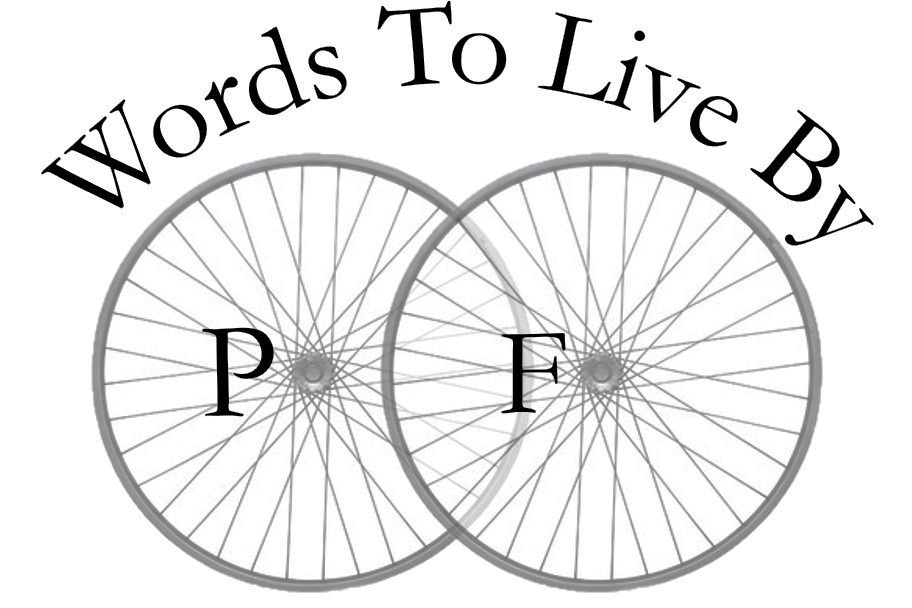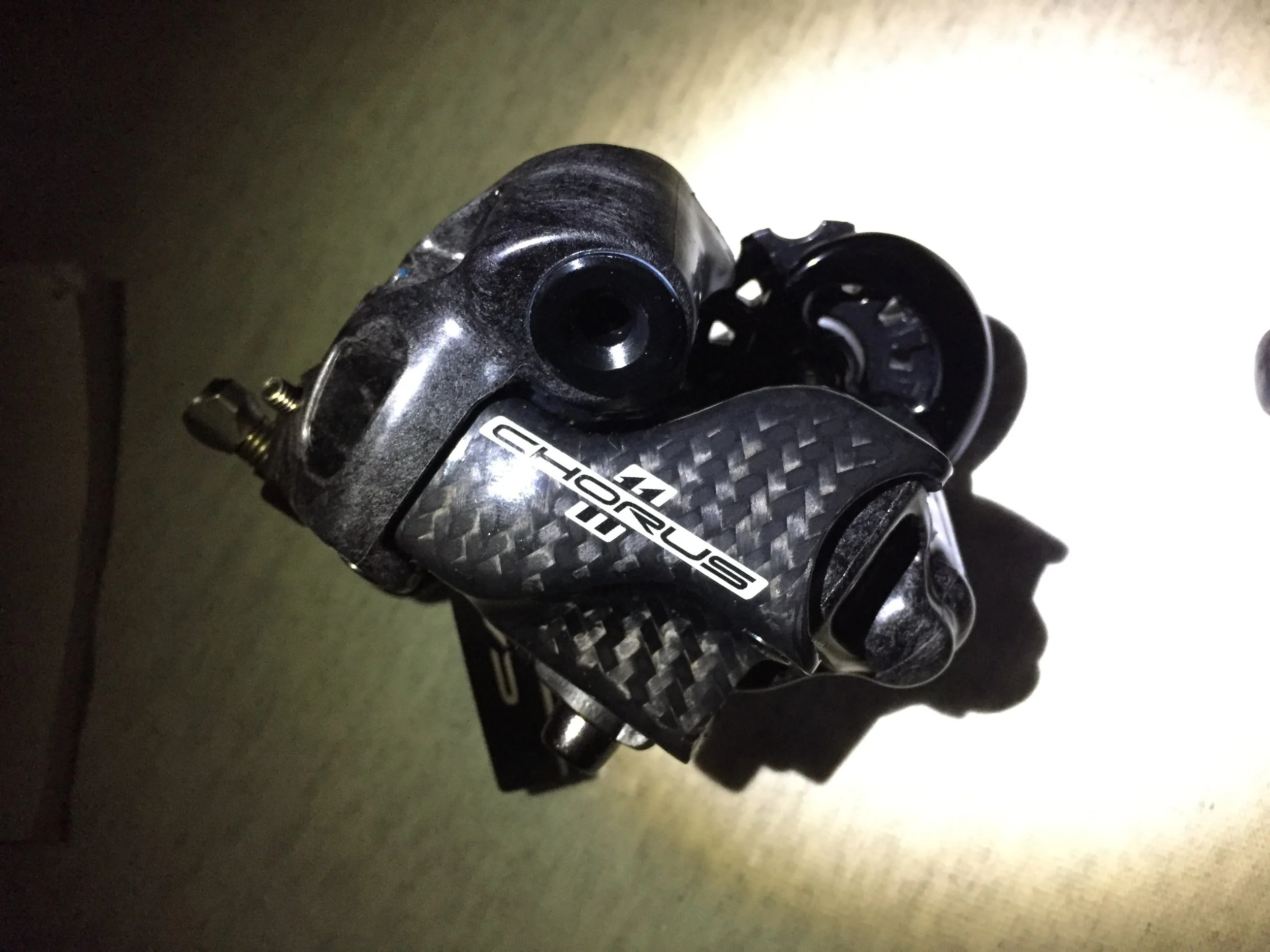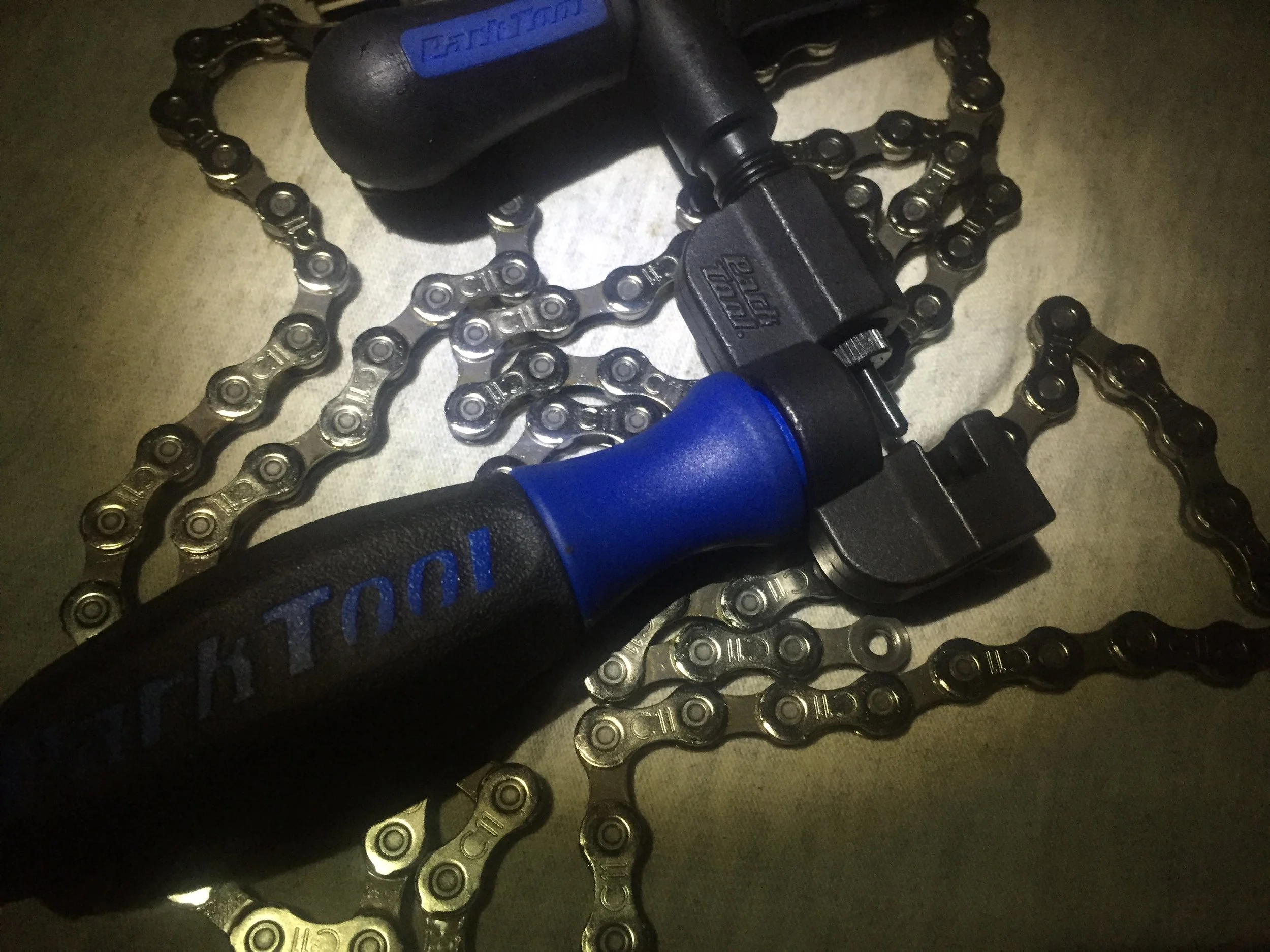French for magic
Truth is, before this exercise in bicycle compilation I knew how to put parts together in combination with parts but I did not understand how those parts worked, separately or, most especially, in conjunction with the whole.
My vision of how derailleurs work, both front and rear, and manage to shift gears was wrong. I had in mind the derailleurs gently lifted and dropped the chain one cog or one ring to the other. This, as it turns out, is not so.
Instead, the action of the derailleurs is more a function of brute force. The mechanism shoves the chain side to side and nothing more – well, nothing more than getting itself out of the way of the freewheel and chainset and taking up slack or, alternately, letting out tautness. That’s it: Jam laterally to and fro in a horizontal plane with opposable tension to scootch clear of larger gears. The mechanisms of the rear derailleur with its jockey pulley and tension pulley manage to keep the tension of the chain constant as its course lengthens and shortens.
It is not the derailleurs that place the chain on the next sprocket, particularly when moving from smaller to bigger, but rather it is by way of ramps and lifts on the cassette gears and chain rings themselves – each positioned precisely themselves and one in relation to another. Here, in the shape and form of the sides, is where advanced engineering has made a difference.
The derailleurs do not shift, they derail. It’s the gears themselves that do the work – now more sure and effortless, smooth and silky, predictable and bombproof than before when the design of cassette gears was barbaric.
Neither did I understand the chain, its complexity and its wonder.
There are at least six parts to every single link of a bicycle chain, and the way it works had eluded me for all my life until five days ago when I read about the development of the roller chain and how it was a critical element in the development of the safety bicycle and the rear-wheel chain drive that made it possible. A workable, efficient and safe derailleur system took another half century-plus to catch up, so it seems plain the improved chain is the more significant. The outside of its bushing business rolls around the sprocket scoop while all the while the pin holding the whole apparatus together itself rolls around the inside of the bushing. This makes it a mobius strip of a ball bearing with a never-ending frictionless inside-out rolling surface.
There’s the wonder.
The Campag chain for the 11-speed cassette is, necessarily, more narrow to fit between the splines of the more-compact layers of cogs. The chain, too, is designed in complement to the ramps and pinions of the gears to facilitate the ramping up onto and slipping down into adjacent, even consecutively adjacent, gears.
Here, then, is the drivetrain, the means of transferring power from my legs to propel these wheels. It is the motive force, the very essence of bicycle as bicycle, the difference between a combination of wheels and frame to scootch along and a pedaled machine.
You can feel it, the chain, connecting effort to effect. Though not when you’re standing still. Let’s go for a ride.
Frame: 1070 grams
Fork: 410
Seatpost: 193
Saddle: 540
Headset: 85
Stem: 155
Handlebars: 269
Levers: 350
Cables and housing: 354
Brakes: 623
Bottom Bracket Cups: 29
Cranks: 585
Chain: 256
Cassette: 292
Rear hub: 293
Front derailleur: 76
Rear derailleur: 183
Running total: 5763 grams, 12.7052402 pounds



